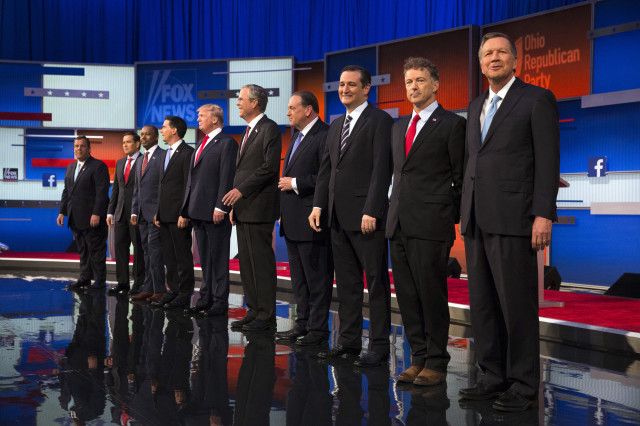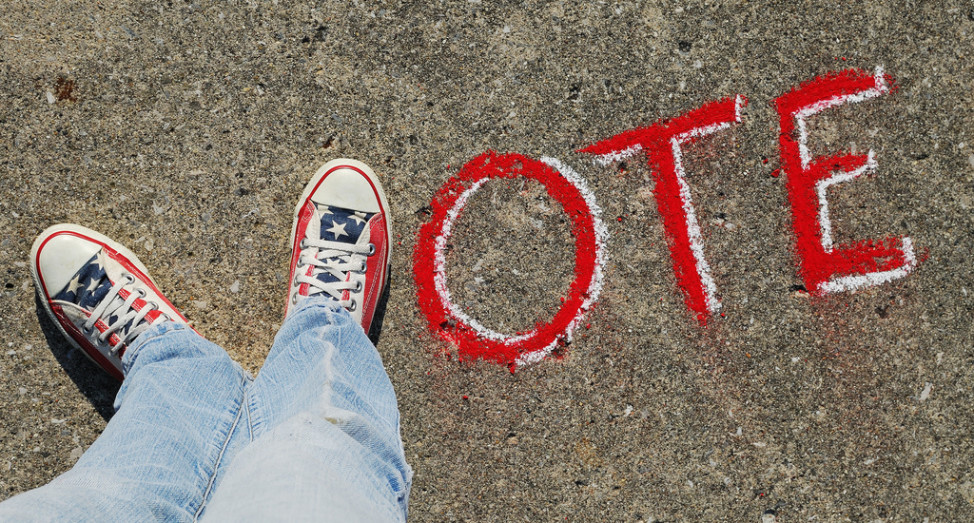As the campaign for the 2016 presidential election gained momentum, U.S. businessman Donald Trump threatened to run as an independent if the Republican party did not treat him “fairly”. Third party candidates have been a part of most presidential elections. But since the 1848 election, when Whig party candidate Zachary Taylor defeated Democrat Lewis Cass, the nation’s top office has been dominated by two parties: the Republicans and the Democrats.

Republican presidential candidates from left, Chris Christie, Marco Rubio, Ben Carson, Scott Walker, Donald Trump, Jeb Bush, Mike Huckabee, Ted Cruz, Rand Paul, and John Kasich take the stage for the first Republican presidential debate, Aug. 6, 2015, in Cleveland, Ohio. (AP Photo)
At the moment, 17 Republicans and 5 Democrats have announced they are running for president in 2016.
Pretty much anyone can run for the top job in the United States, as long as they meet certain requirements set forth in the U.S. Constitution: At the time an elected president takes office, he or she must be at least thirty-five years old, a resident of the U.S. for at least 14 years, and a natural born citizen.
As expected, Republicans and Democrats are dominating the 2016 election cycle, but that hasn’t always been the case. Before the Civil War, candidates from a variety of parties were also serious contenders.
Americans have elected 43 presidents in 57 elections since the adoption of the Constitution in 1789, when George Washington, the first U.S. president, was elected. Washington essentially ran unopposed twice; the real question was who his vice president would be. In the first truly contested election, Washington’s vice president, Federalist John Adams, faced off against Democratic-Republican Thomas Jefferson.
U.S. elections have been contested ever since then and, for the past 150 years, have been dominated by the two major modern-day political parties. In many cases, over time, states have changed which party’s candidate they vote for.
Business Insider has developed the animated map below highlighting these changing trends by showing how each U.S. state has voted in every presidential election.























Interesting. But what of Americans who have voted by absentee ballot from abroad, and what year were they able to? There is a misconception that I encounter here in Thailand from non-Americans that Americans who live abroad cannot vote when in fact they can. I read an article some time back that Hillary Clinton went to Ireland seeking American votes. I am curious to know and I am sure others are as well how many Americans vote abroad and from what countries. I vote by absentee ballot and so do my adult children in Virginia. Some years ago while on an elevator here in Bangkok I encountered a group of Cambodians and in my hand was my absentee ballot material and I explained to them that I was voting in an American election. The group of Cambodians were amazed and transfixed at my absentee ballot at seeing American democracy in action on an elevator in Bangkok, Thailand, thousands of miles from America. At the time given their recent history of genocide committed in their country by the Khmer Rouge and the absence of democracy I could well understand why they were mesmerized by my absentee ballot from Virgina that I was holding in my hand.